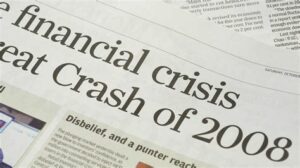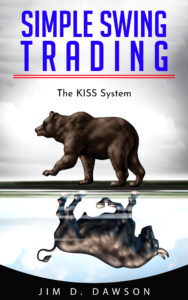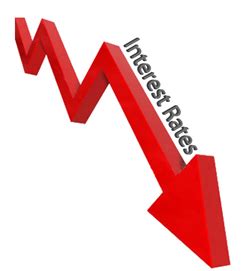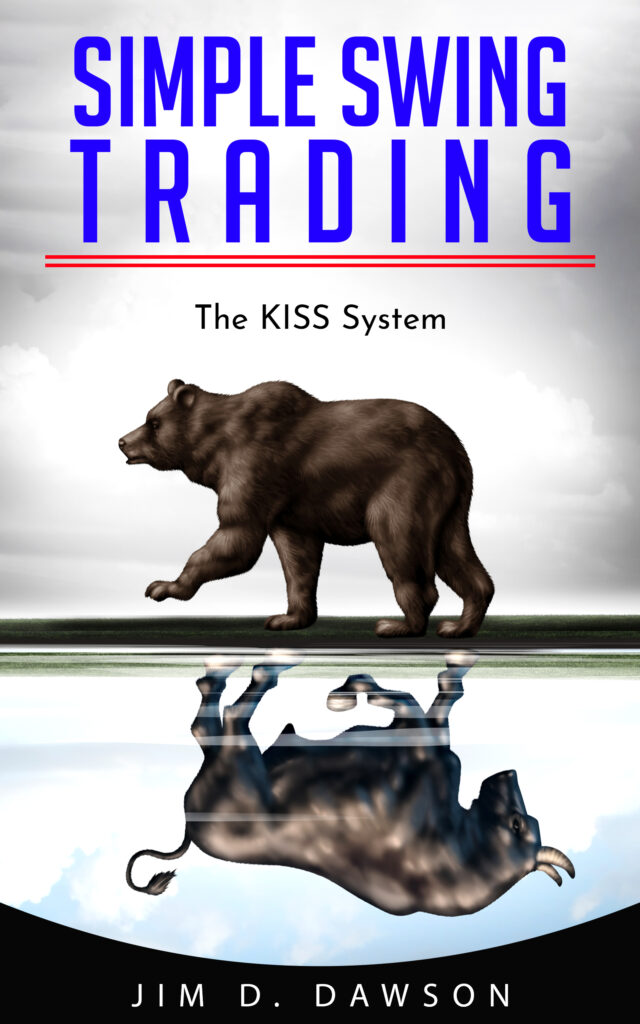The crisis of 2008 was the result of risky financial behavior and market speculation. It originated with the subprime mortgage crisis and amplified with  risky lending, excessive market leverage, lax financial regulation, and a failure of risk managers to rein in risk taking. The crisis created a recession that lasted from late 2007 to mid-2009.
risky lending, excessive market leverage, lax financial regulation, and a failure of risk managers to rein in risk taking. The crisis created a recession that lasted from late 2007 to mid-2009.
Over five years after the crisis, the economy had recovered but financial institutions were still holding much less debt than before the crisis. Many financial institutions, however, are still feeling the economic effects of the crisis. Even today, interest rates are still low and growth is slow. We’ll cover all that and more in this guide on the financial crisis of 2008 and its aftermath.
The Great Recession by the numbers
The Great Recession lasted 18 months, but the economic crisis and recession has left a long-lasting mark on the economy. The financial crisis of 2008-9 was the most severe economic downturn in the history of the United States. It lasted for over two years, and its economic and social consequences are still being felt today.
The crisis had far-reaching global effects, with global stock markets closing sharply and interest rates rising. US households saw a net worth decline of $19.2 trillion, GDP fell 4.3%, the largest decline in 60 years, unemployment rate reached 10% in October 2009, and housing prices declined by nearly half from their peak. A recession also causes high levels of unemployment and economic depression.
Foreclosures were seen during this period due to mortgage default rate reaching 2-2.5%. Also, the financial crisis led to a recession in housing market which caused home foreclosures rates to rise by 3% each year between 2007- 2009.
Immoderate investments and deregulation
The financial crisis of 2007-2008 was the result of the crash of housing market bubble and subprime loans, which were made by financial institutions to people with low-income.
During the housing market bubble period, financial institutions took bigger gambles and lent in risky ways, leading to massive bubbles in housing market and mortgage-backed securities market. When mortgage-backed securities market crashed, financial institutions holding trillions of dollars worth of investments in subprime mortgages were left holding near-worthless assets. The lending practices that led to the housing bubble and recession caused great economic damage.
Compare this financial crisis with the crash of the stock market in 1929. At the time, financial institutions were deregulating lending practices, which resulted in a stock market crash wherein millions lost their savings and investments. They also faced economic hardships and unemployment due to recession as a result of financial crisis.
Loose lending standards in the housing market
– The rise of subprime mortgages in the housing market created a housing bubble, which burst and caused the financial crisis of 2008.
– Loans were made to homeowners who had low credit scores and sub-prime financial backgrounds, causing a bubble to form in the housing market.
– Outdated lending regulations that weren’t rigorously enforced also allowed lenders to get sloppy with underwriting, leading to high default rates on mortgage repayments.
– Loans that were made to homeowners with sub-prime financial backgrounds resulted in home equity loans being taken out as well, with interest rates of between 6 and 12% being charged on these loans.
– This had a great effect on mortgage markets as home equity loans became the de facto standard for mortgages.
– As interest rates dropped, mortgage lending standards relaxed and lending institutions offered mortgages that were too expensive for many homeowners. Banks also continued lending money indiscriminately as the housing market expanded rapidly.
– This led to mortgage debt going from $9 trillion to $16 trillion in 10 years’ time and mortgage debt accounting for nearly half of household debt globally by 2007
– The housing market bubble burst due to subprime mortgages becoming more popular than ever before, the bursting of which caused defaults among mortgage holders and property prices falling rapidly.
Risky Wall Street behavior
– Risky Wall Street behavior like the subprime mortgage market and the financial crisis of 2008 was a critical factor in causing the financial crisis
– The subprime mortgage market led to a housing bubble, which eventually burst. This caused the financial crisis of 2008.
– Lehman Brothers’ collapse in September of that year triggered the widespread panic in financial markets globally.
– The U.S. government responded with massive bailouts of financial institutions and other fiscal and monetary policies to prevent the collapse of the global financial system.
– Businesses and households became much less willing to invest or spend due to the lack of confidence in the economy.
– This also resulted in lower economic growth rates and increased unemployment rate, among others
– The subprime mortgage market was one of the leading factors behind the financial crisis of 2008
Weak watchdogs
– The 2008 financial crisis began with the bankruptcy of subprime lender Bear Stearns in July of 2007 followed by the bankruptcy of subprime lender Lehman Brothers in September of that year. These two bankruptcies were the initial sparks that caused financial institutions around the world to become paralyzed, reaching out to their respective central banks for emergency funding.
– A global financial crisis is a market crash or recession characterized by high unemployment and economic instability. This crisis led to widespread bank bailouts, housing market downturns, government debt default, and economic recession.
– Weak watchdogs in the financial system contributed to the 2008 financial crisis due to the lack of oversight and regulation of financial institutions.
– This crisis was a result of subprime lending practices that encouraged mortgage borrowing for people who were unqualified for loans and probably could not afford them.
– Less-qualified mortgage loans contributed greatly to the housing bubble that inevitably burst causing financial institutions worldwide great financial losses.
– Strong monetary policy and interest rate hikes were adopted after the crisis as a way to prevent a recurrence of it.
The subprime mortgage crisis
The subprime mortgage crisis of the Great Recession of 2007-2009 was a financial crisis that occurred in the United States housing market during the period of 2003-2007. This crisis began with the bursting of the housing bubble of the early 2000s and led to widespread failures in financial regulation and on Wall Street. The crisis was the result of risky subprime lending and mortgage practices that led to financial institutions lending money to consumers with low credit scores.
The housing bubble was created by low interest rates and easy lending policies, which fueled home buying among subprime borrowers. As mortgage interest rates began to rise, many homeowners who had loans with high interest rates could not afford their mortgages. When subprime mortgage lenders defaulted, homeowners were left unable to pay their mortgages, leading to foreclosures and economic downturns.
The Financial Crisis Inquiry Commission reported in 2011 that the crisis was an “avoidable” disaster due to widespread failures in government regulation and on Wall Street. The precipitating factor of the housing bubble crisis was the bursting of the housing bubble of the early 2000s and subprime mortgage crisis, due to a high default rate of adjustable-rate mortgages. New financial regulations were also aimed at preventing such crises from occurring again, resulting in a more activist Fed chairperson and financial reforms across all markets
The 2008 stock market crash
– The financial crisis of 2008-09 was the result of the subprime mortgage crisis, housing market bubble and the economic recession.
– Following the financial crisis of 2007-08, the federal government came to the rescue of the financial sector with a $2 trillion bailout program.
– This bailout program had a negative effect on the economy as it stifled lending and interest rates were kept low, which in turn stifled economic growth.
– Additionally, mortgage regulations were also relaxed, which resulted in subprime mortgages being given out without regard for borrowers’ ability to repay the loans. This eventually led to the housing market crash and economic recession.
– The crash resulted in unemployment and housing foreclosures that lasted for several years. It also resulted in decreased household income and wealth, increased income disparity, and political instability.
– With high unemployment rate and mortgage foreclosures lingering in many states, financial institutions are wary of lending money to subprime mortgages. Nowadays, housing prices have not recovered to their pre-crisis levels even after 10 years of economic recovery.
Aftermath of the Great Recession
– The financial crisis of 2008-2009 was the most recent economic downturn in the United States. It began in subprime mortgage lending and housing market bubble, which eventually led to the global financial crisis of 2008-2009. This crisis led to economic recession, high unemployment rate, and economic recession.
– The Great Recession officially lasted from December 2007 to June 2009. This recession was caused by mortgage-backed securities market bubble, excess housing debt, reckless lending practices, subprime mortgage crisis, immoderate investments, loose lending standards in housing market, risky Wall Street behavior, weak watchdogs and the financial crisis of 2007-2008. These factors resulted in economic recession.
– In response to the great recession, federal government created two programs: Troubled Asset Relief Program (TARP) and the Supplemental Appropriations Act of 2010 (2010 Farm Bill). TARP provided $700 billion financial bailout for financial institutions that were deemed ‘troubled’. Farm bill also provided monetary assistance to farmers and agricultural organizations affected by recession with $9 billion.
– As per federal government’s report on causes of great recession, ‘Other factors that contributed to great recession include housing bubbles, mortgage interest rate increase and housing market crash’
– Economic recession ended in mid-2010. But after a few months there was news of another financial crisis- this time due to subprime mortgage lending bubble and housing market crash’
– Now over the past few years congress has been revising Dodd-Frank financial regulation act’
The Great Recession is considered as one of the deepest recessions in U.S economic history that claimed millions of jobs worldwide.
Financial regulation and reform
In the aftermath of the financial crisis of 2008, the Dodd-Frank Act was enacted to reform the regulation of the financial industry. This legislation aimed to prevent another financial crisis by creating a more robust oversight framework for financial institutions. One of the key provisions of the act was the creation of the FSOC, a council tasked with identifying risks to financial stability and implementing policies to address these risks. The FSOC includes representatives from different federal agencies tasked with overseeing different aspects of financial regulation, such as the Federal Reserve, Office of the Comptroller of the Currency, and Securities and Exchange Commission. The FSOC plays an important role in ensuring that banks are acting within acceptable risk parameters and in preventing them from becoming too big to fail.
An activist Fed
The Federal Reserve took an active role in responding to the Great Recession, implementing a range of policy measures to stabilize the financial system. Among these measures were interest rate reductions and the launch of several quantitative easing (QE) programs. One such QE program involved the purchase of mortgage-backed securities from the private sector. This helped to restore confidence in the financial system, and eventually contributed to the economic recovery. The Fed’s efforts played a vital role in ensuring financial stability during this tumultuous time and are now considered vital for promoting economic growth and stability.
The actions taken by the federal government and the Federal Reserve during and after the financial crisis have helped to ensure that the US financial system is now more resilient and able to handle future economic shocks.
Policy Responses
The financial crisis of 2008 is the most recent example of the dangers of financial market-based capitalism. The crisis sparked a global recession and led to the great recession, which in turn deeply impacted the economy of many countries.
As part of its response to the crisis, the Financial Stability Oversight Council (FSOC) was created in 2009 to prevent financial institutions from becoming ‘too big to fail’. In addition, the Dodd-Frank Wall Street Reform and Consumer Protection Act was passed as a response to the crisis in order to prevent similar crises from happening in the future.
An analysis of transcripts from 72 Federal Open Market Committee (FOMC) meetings showed that FOMC members were prevented from seeing the oncoming crisis due to their own assumptions about how the economy works using the framework of macroeconomics. This prevented them from taking effective action to stave off a potential financial crisis.
In addition, governments around the world made several other policy responses to prevent financial institutions from becoming too big to fail. As a result, financial market-based capitalism became more regulated and more stable.
Lower interest rates
Central banks across the globe responded to the financial crisis by reducing interest rates. The Federal Reserve, for instance, cut the federal funds rate from 6.5% in May 2000 to 1% in June 2003. This was intended to boost economic activity and reduce unemployment. However, the rate remained at 1% for more than a decade and only recently began to rise again. Other central banks also lowered interest rates during this time, which helped contribute to the low-interest-rate environment of the 2000s that was identified as a key factor in the build-up to the crisis.
The U.S. Treasury created a superfund for buying distressed portfolios of subprime mortgages as part of its efforts to help stabilize financial markets during the financial crisis. In addition, the Fed created TAF, a program that offered short-term credit to banks with subprime mortgages. All of these actions helped ease market volatility and promote economic growth in the years leading up to and after the crisis.
Increased government spending
In response to the financial crisis of 2007-2008, central banks lowered interest rates to stimulate economic activity. The U.S. Federal Reserve reduced its federal funds rate to 5.25% in November 2007 and kept it there for the rest of that year. Similarly, the European Central Bank (ECB) lowered its interest rate to a range of 1% to 3% in January 2008 and kept it there for the rest of that year. In addition, the U.S. Treasury created a superfund in November 2007 to buy distressed portfolios of subprime mortgages from financial institutions during the financial crisis. The goal of the superfund was to help homeowners who had defaulted on their mortgages or were facing mortgage default risks due to financial crisis.
The U.S. government also created the Troubled Asset Relief Program (TARP) in October 2008 with a goal of stabilizing the financial system and providing economic assistance to homeowners and businesses affected by the financial crisis. However, TARP received significant criticism after it was revealed that some of the funds used by the program went towards funding stock buybacks rather than investments aimed at helping homeowners pay off their mortgages or lending institutions shore up their finances
In 2009, the US government passed the American Recovery and Reinvestment Act (ARRA), which provided $787 billion in tax cuts and increased government spending as a way to stimulate economic growth and prevent further economic downturns
Stronger oversight of financial firms
Following the financial crisis of 2008, the US government implemented the Financial Stability Oversight Council (FSOC), a body responsible for monitoring and regulating the activities of Too Big to Fail financial firms. The Dodd-Frank Act was signed into law in 2010, introducing new rules and regulations designed to prevent another financial crisis from occurring. In addition, the Dodd-Frank Act strengthened the Sarbanes-Oxley Act, providing new protections for whistleblowers and expanding the statute of limitations for employee claims against their employers.
The Dodd-Frank Act also imposed strict regulations on Too Big to Fail financial firms, including limits on proprietary trading and dealings with hedge funds and private equity firms. All of these measures have helped ensure that no financial crisis of this magnitude can happen again.
Can we avoid repeating the 2008 recession?
-The financial crisis of 2008 is the most important economic crisis of the past two decades.
– The Dodd-Frank Wall Street Reform and Consumer Protection Act, signed into law in 2010, provides additional oversight and prevents any one banking or insurance firm from becoming too big to threaten the financial industry. Researchers found many of the same red flags blamed for the crisis, such as subprime lending and risky securities trading.
-In recent years, banks have been making subprime loans and lending money to housing market speculators with poor track records. This has led to a bubble on housing market, which eventually bursts and triggers economic downturn.
-In addition to mortgage lending abuses, other factors behind the financial crisis include financial institutions’ failures to assess loan-risk properly and inadequate oversight by federal financial regulators.
-Congress voted to scale back many Dodd-Frank provisions, raising concerns about a possible future recession.
Conclusion
The financial crisis of 2008 was the result of a confluence of economic and organizational factors. The housing market was slowing, subprime mortgages were failing, financial firms were overexposed to securities linked to subprime mortgages, and financial-sector oversight was lax. It is no wonder that the crisis resulted in the global financial system freezing up and the economy contracting for three consecutive quarters. However, there are things that individuals can do to improve their financial literacy (i.e., understanding credit scores, mortgage terms, etc.) and make smarter financial decisions. Hopefully, we will be able to avoid a recurrence of the financial crisis of 2008 by learning from it.

